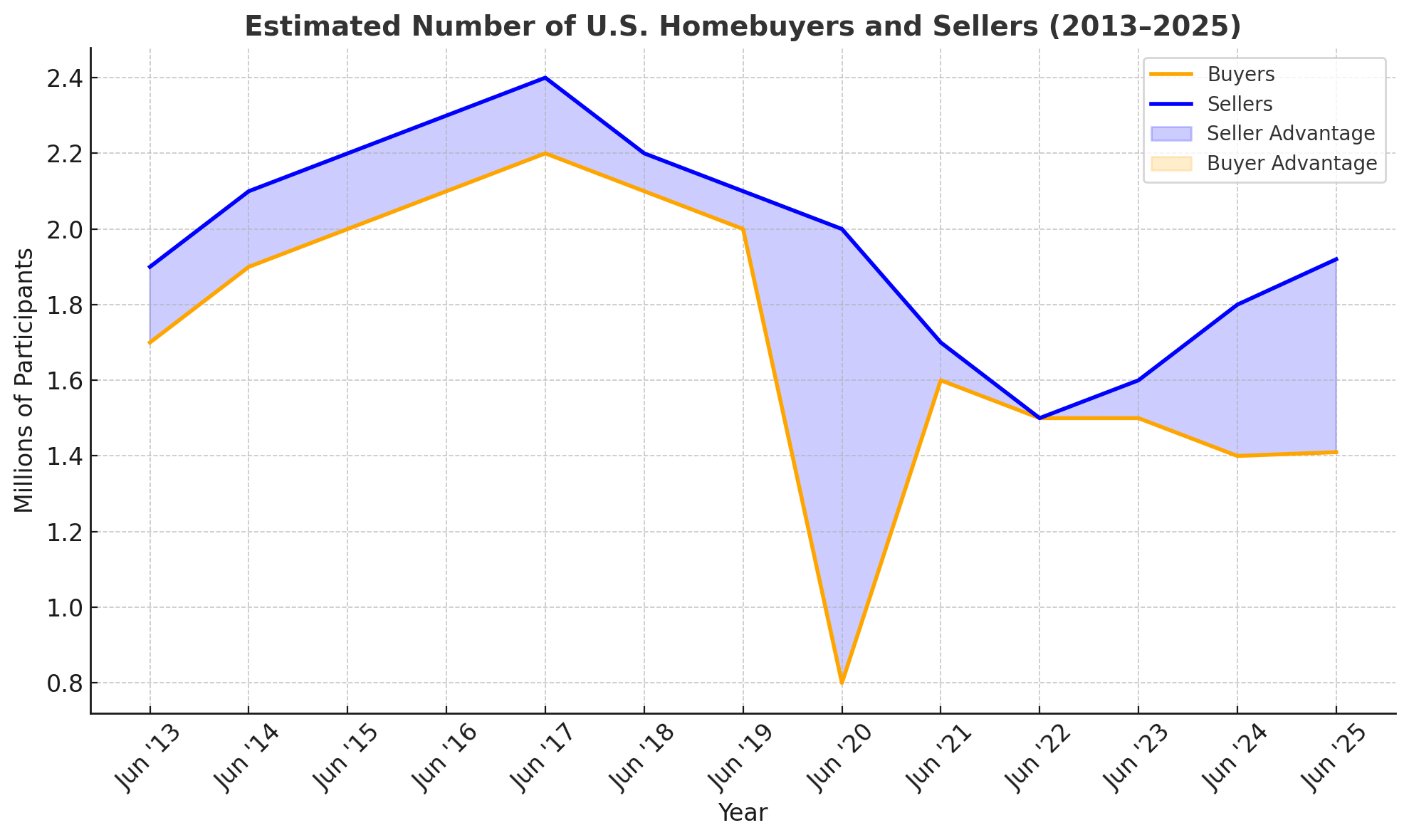Housing Market in Transition: Cooling or Resilient?
The U.S. housing market has dominated headlines over the past six years, fueled by pandemic-era migration, historically low interest rates (and then not), and a supply-demand imbalance that sent home prices soaring. While some believe a market correction is long-term, others insist that real estate prices only move in one direction—up and to the right. The truth, as always, is more nuanced. Investor activity, affordability pressures, and shifting economic conditions all play a role in shaping the current landscape.
Investor Activity and Affordability Pressures
Institutional and individual investors have played a growing role in housing demand, often outbidding traditional homebuyers and accelerating price appreciation in already-competitive markets. This dynamic, coupled with a multi-year stretch of under building, helped push the median home price-to-median income ratio to historically high levels, making homeownership increasingly out of reach for many.
Add in the recent rise in mortgage rates, and the cost of borrowing has made the monthly payment burden even heavier, even as wages struggle to keep pace.
Early Signs of a Buyer’s Market
On the bearish side, there are early signs that the tide may be turning. According to recent data from Redfin, there are now nearly 500,000 more homes listed for sale than there are active buyers—a stark reversal from 2019 through 2023, when buyer demand consistently outpaced supply.
This widening gap suggests that buyers may finally be regaining some negotiating power in a market that has long favored sellers. While this alone doesn’t confirm a full-blown buyer’s market, it signals a meaningful shift worth watching closely.

Why Prices May Still Hold
However, despite these indications of a market shift, many signs underscore bullish investors’ fundamental point: housing prices may continue to rise.
- Persistent price growth has continued over the past year, even as listings outpaced buyers.
- The median home price nationally has declined from its peak in 2022 of $442,600 to $410,800 in the second quarter of 2025.
- Homeowners hold a historic $33 trillion in equity, reducing the pressure to sell at discounted prices.
- Investor confidence in the long-term stability of real estate prices remains strong.
.png)
Conclusion: A Market in Transition
The U.S. housing market is exhibiting signs of both cooling and resilience. Increased inventory, longer deal times, elevated mortgage rates, and affordability concerns point toward a gradual shift in favor of buyers, but this transition is far from uniform.
Housing is inherently local, and national headlines often miss the nuance playing out at the city and neighborhood level. While some markets are clearly softening, others remain highly competitive, with tight supply and persistent demand.
- For buyers: Negotiation power is slowly returning, especially in overbuilt or overheated areas.
- For sellers: Current price levels and historically high equity may still provide a strong exit opportunity, particularly in regions where demand remains intact.
Ultimately, those with a long-term view and an understanding of their local market conditions are best positioned to navigate this evolving landscape.






